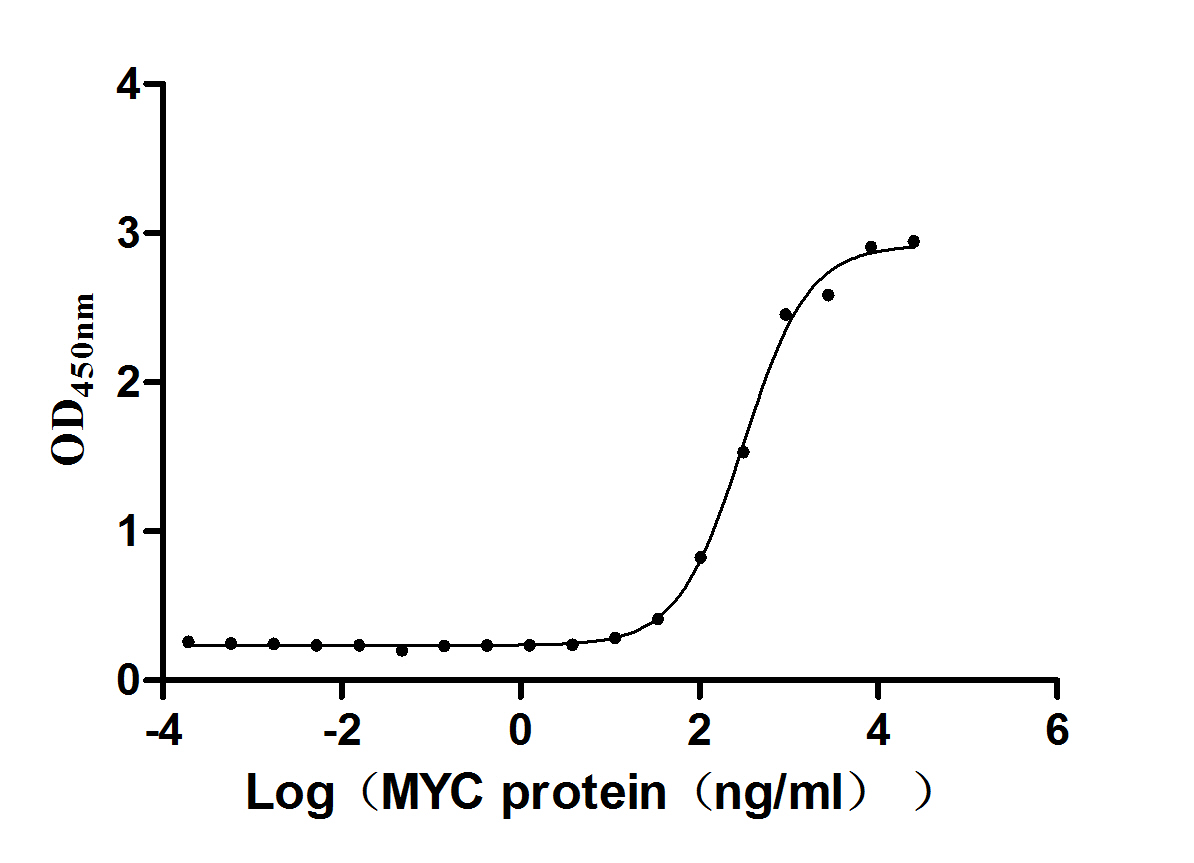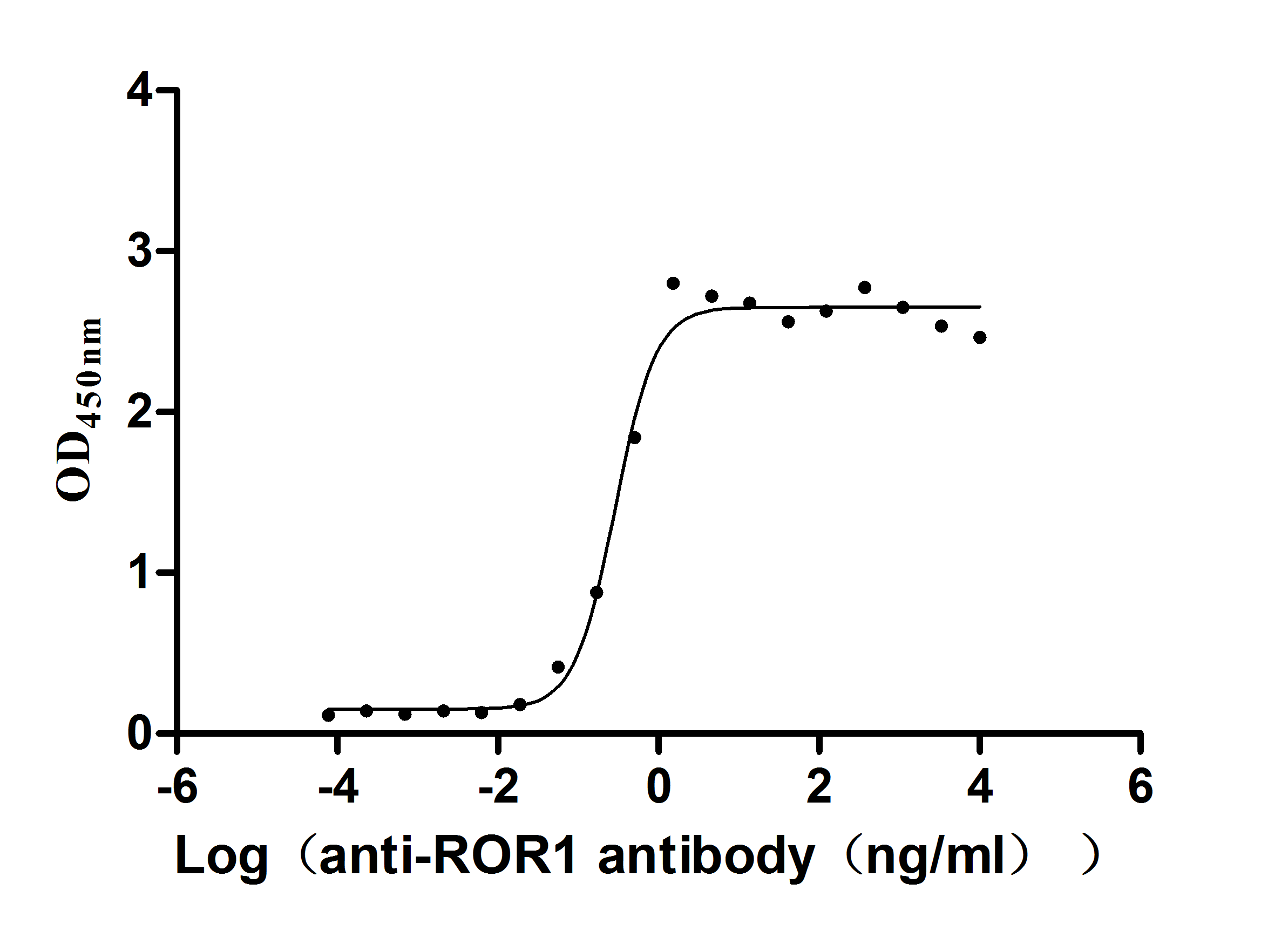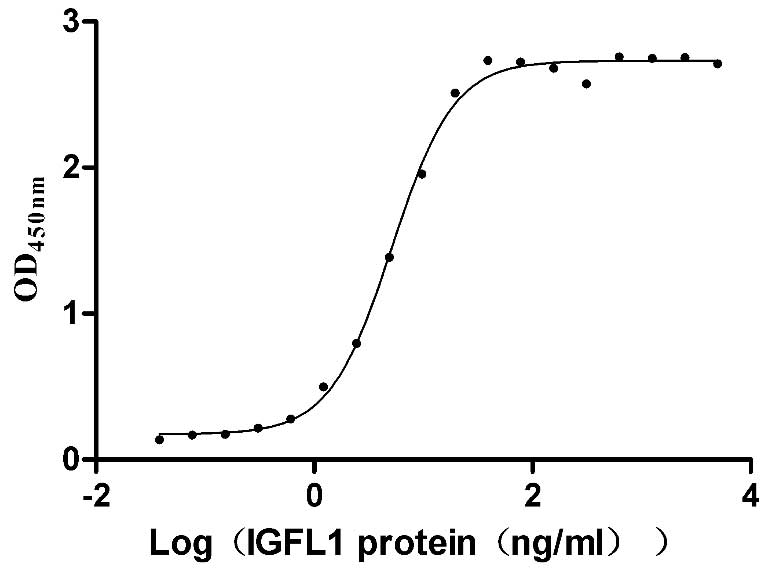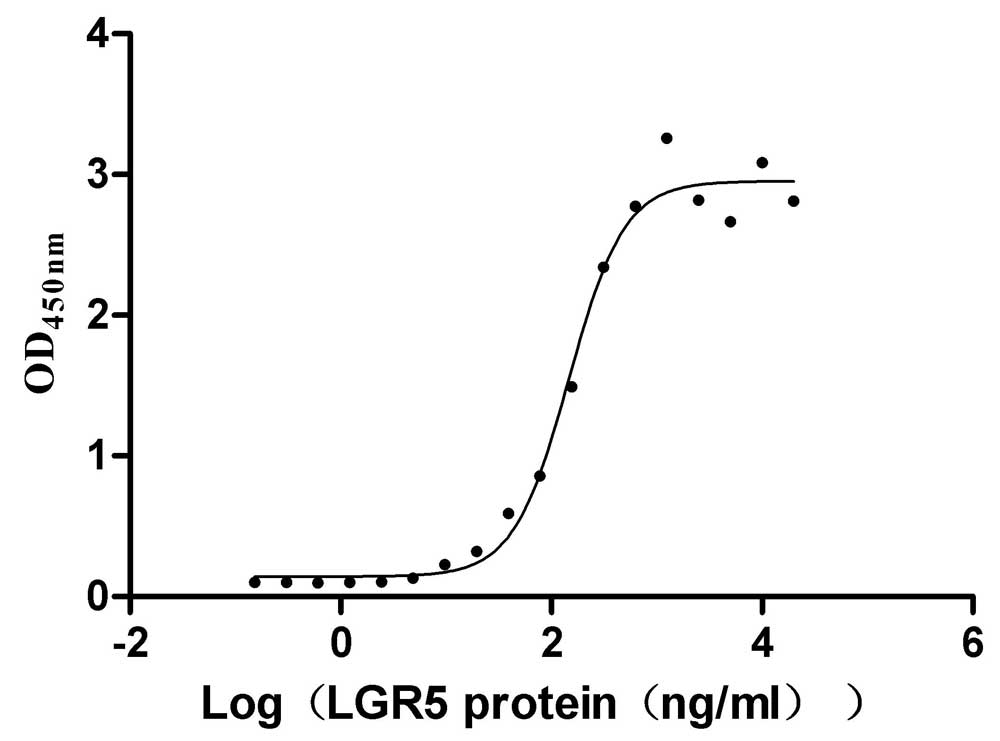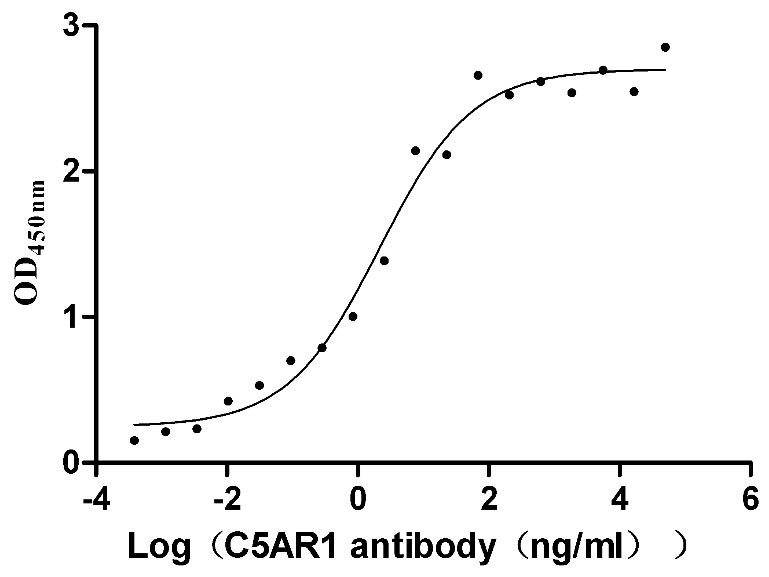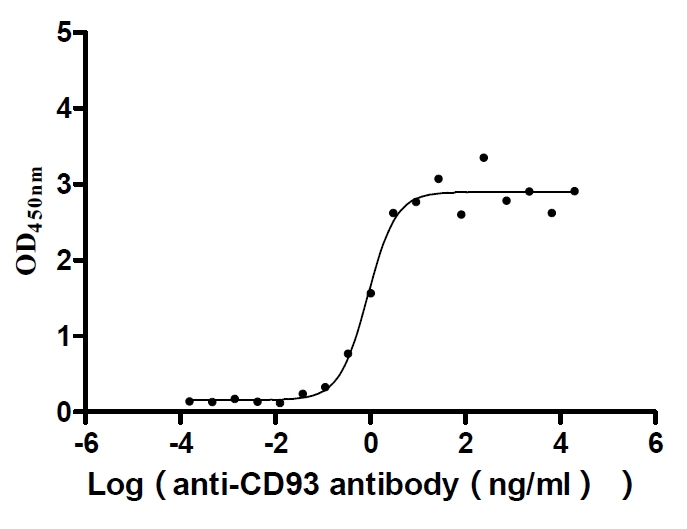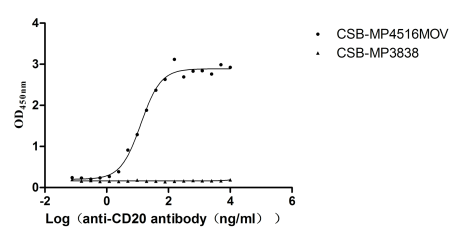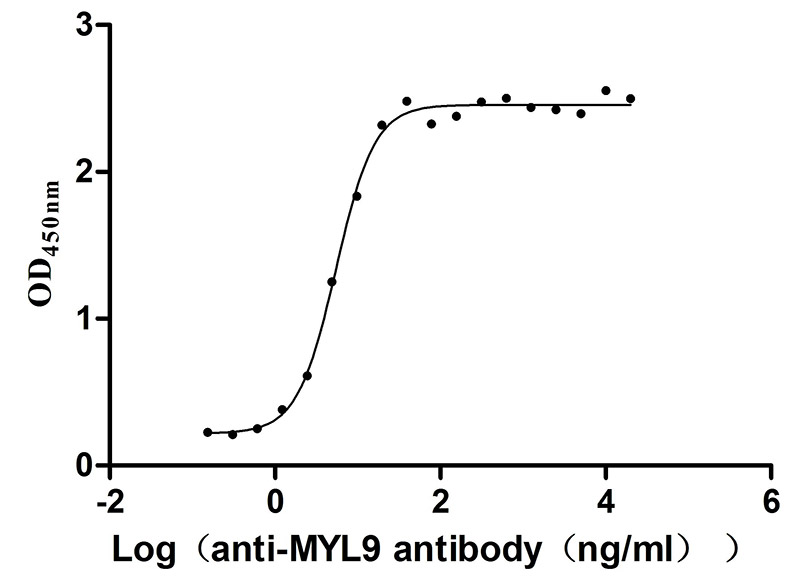Recombinant Human Probable global transcription activator SNF2L1 (SMARCA1), partial
-
中文名稱:人SMARCA1重組蛋白
-
貨號(hào):CSB-YP021798HU
-
規(guī)格:
-
來源:Yeast
-
其他:
-
中文名稱:人SMARCA1重組蛋白
-
貨號(hào):CSB-EP021798HU
-
規(guī)格:
-
來源:E.coli
-
其他:
-
中文名稱:人SMARCA1重組蛋白
-
貨號(hào):CSB-EP021798HU-B
-
規(guī)格:
-
來源:E.coli
-
共軛:Avi-tag Biotinylated
E. coli biotin ligase (BirA) is highly specific in covalently attaching biotin to the 15 amino acid AviTag peptide. This recombinant protein was biotinylated in vivo by AviTag-BirA technology, which method is BriA catalyzes amide linkage between the biotin and the specific lysine of the AviTag.
-
其他:
-
中文名稱:人SMARCA1重組蛋白
-
貨號(hào):CSB-BP021798HU
-
規(guī)格:
-
來源:Baculovirus
-
其他:
-
中文名稱:人SMARCA1重組蛋白
-
貨號(hào):CSB-MP021798HU
-
規(guī)格:
-
來源:Mammalian cell
-
其他:
產(chǎn)品詳情
-
純度:>85% (SDS-PAGE)
-
基因名:SMARCA1
-
Uniprot No.:
-
別名:SMARCA1; SNF2L; SNF2L1; Probable global transcription activator SNF2L1; EC 3.6.4.-; ATP-dependent helicase SMARCA1; Nucleosome-remodeling factor subunit SNF2L; SWI/SNF-related matrix-associated actin-dependent regulator of chromatin subfamily A member 1
-
種屬:Homo sapiens (Human)
-
蛋白長(zhǎng)度:Partial
-
蛋白標(biāo)簽:Tag?type?will?be?determined?during?the?manufacturing?process.
The tag type will be determined during production process. If you have specified tag type, please tell us and we will develop the specified tag preferentially. -
產(chǎn)品提供形式:Lyophilized powder
Note: We will preferentially ship the format that we have in stock, however, if you have any special requirement for the format, please remark your requirement when placing the order, we will prepare according to your demand. -
復(fù)溶:We recommend that this vial be briefly centrifuged prior to opening to bring the contents to the bottom. Please reconstitute protein in deionized sterile water to a concentration of 0.1-1.0 mg/mL.We recommend to add 5-50% of glycerol (final concentration) and aliquot for long-term storage at -20℃/-80℃. Our default final concentration of glycerol is 50%. Customers could use it as reference.
-
儲(chǔ)存條件:Store at -20°C/-80°C upon receipt, aliquoting is necessary for mutiple use. Avoid repeated freeze-thaw cycles.
-
保質(zhì)期:The shelf life is related to many factors, storage state, buffer ingredients, storage temperature and the stability of the protein itself.
Generally, the shelf life of liquid form is 6 months at -20°C/-80°C. The shelf life of lyophilized form is 12 months at -20°C/-80°C. -
貨期:Delivery time may differ from different purchasing way or location, please kindly consult your local distributors for specific delivery time.Note: All of our proteins are default shipped with normal blue ice packs, if you request to ship with dry ice, please communicate with us in advance and extra fees will be charged.
-
注意事項(xiàng):Repeated freezing and thawing is not recommended. Store working aliquots at 4°C for up to one week.
-
Datasheet :Please contact us to get it.
相關(guān)產(chǎn)品
靶點(diǎn)詳情
-
功能:Catalytically inactive when either DNA or nucleosomes are the substrate and does not possess chromatin-remodeling activity. Acts as a negative regulator of chromatin remodelers by generating inactive complexes.; Helicase that possesses intrinsic ATP-dependent chromatin-remodeling activity. ATPase activity is substrate-dependent, and is increased when nucleosomes are the substrate, but is also catalytically active when DNA alone is the substrate. Catalytic subunit of ISWI chromatin-remodeling complexes, which form ordered nucleosome arrays on chromatin and facilitate access to DNA during DNA-templated processes such as DNA replication, transcription, and repair. Within the ISWI chromatin-remodeling complexes, slides edge- and center-positioned histone octamers away from their original location on the DNA template. Catalytic activity and histone octamer sliding propensity is regulated and determined by components of the ISWI chromatin-remodeling complexes. The BAZ1A-, BAZ1B-, BAZ2A- and BAZ2B-containing ISWI chromatin-remodeling complexes regulate the spacing of nucleosomes along the chromatin and have the ability to slide mononucleosomes to the center of a DNA template. The CECR2- and RSF1-containing ISWI chromatin-remodeling complexes do not have the ability to slide mononucleosomes to the center of a DNA template. Within the NURF-1 and CERF-1 ISWI chromatin remodeling complexes, nucleosomes are the preferred substrate for its ATPase activity. Within the NURF-1 ISWI chromatin-remodeling complex, binds to the promoters of En1 and En2 to positively regulate their expression and promote brain development. May promote neurite outgrowth. May be involved in the development of luteal cells.
-
基因功能參考文獻(xiàn):
- In one family, four siblings with a psychotic illness and their unaffected mother each carry a novel private missense variant in the SMARCA1 gene on the X chromosome. PMID: 27001614
- Depletion of a chromatin remodeler, SMARCA1, in cancer cell lines promoted their growth. PMID: 25462860
- The results suggest that the cAMP-response element consensus sequence in the SNF2L proximal promoter most likely confers constitutive activation and regulation by cAMP in neural cells. PMID: 23549828
- The effect of SNF2L depletion on gene expression portray the cell in a state of activated Wnt signaling with increased proliferation and locomotion. High levels of SNF2L expression in normal melanocytes contrast with undetectable expression in melanoma. PMID: 22508985
- expression profiling analyses revealed that SWI/SNF likely antagonizes Polycomb repressive complex 2, implicating this as one possible mechanism of tumor suppression PMID: 22233809
- ISWI proteins Snf2H, Snf2L as well as Acf1 accumulate at UV-induced DNA damage sites within tens of seconds and reach a plateau after a few minutes. PMID: 21738833
- Cancers are sensitive to SNF2L knockdown because, unlike their normal counterparts, they lack sufficient compensation from other family members. PMID: 19996304
- a neuronal SNF2L variant inactivates chromatin remodeling PMID: 15310751
- Brahma and Brahma/SWI2-related gene 1 have roles in hypoxic induction of the erythropoietin gene PMID: 15347669
- This study provides the first insight into the mechanisms that control basal expression of human SNF2L gene. PMID: 18243132
- SNF2L mutations are not a cause of X-linked mental retardation in our cohort of patients, although we cannot exclude the possibility that regulatory mutations might exist PMID: 18302774
顯示更多
收起更多
-
亞細(xì)胞定位:Nucleus.
-
蛋白家族:SNF2/RAD54 helicase family, ISWI subfamily
-
組織特異性:[Isoform 1]: Mainly expressed in non-neuronal tissues such as lung, breast, kidney, and ovary.; [Isoform 2]: Expressed in lung, breast, kidney, ovary, skeletal muscle and brain.
-
數(shù)據(jù)庫鏈接:
Most popular with customers
-
Recombinant Human papillomavirus type 16 Protein E7 (E7) (Active)
Express system: E.coli
Species: Human papillomavirus type 16
-
Express system: Mammalian cell
Species: Homo sapiens (Human)
-
Recombinant Human IGF-like family receptor 1 (IGFLR1), partial (Active)
Express system: Mammalian cell
Species: Homo sapiens (Human)
-
Recombinant Human R-spondin-1 (RSPO1), partial (Active)
Express system: Mammalian cell
Species: Homo sapiens (Human)
-
Recombinant Human C5a anaphylatoxin chemotactic receptor 1 (C5AR1)-VLPs (Active)
Express system: Mammalian cell
Species: Homo sapiens (Human)
-
Recombinant Human Complement component C1q receptor (CD93), partial (Active)
Express system: Mammalian cell
Species: Homo sapiens (Human)
-
Recombinant Macaca fascicularis Membrane spanning 4-domains A1 (MS4A1)-VLPs (Active)
Express system: Mammalian cell
Species: Macaca fascicularis (Crab-eating macaque) (Cynomolgus monkey)
-
Recombinant Human Myosin regulatory light polypeptide 9 (MYL9) (Active)
Express system: Yeast
Species: Homo sapiens (Human)


